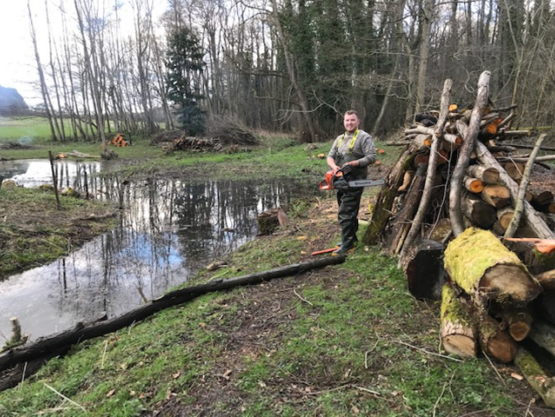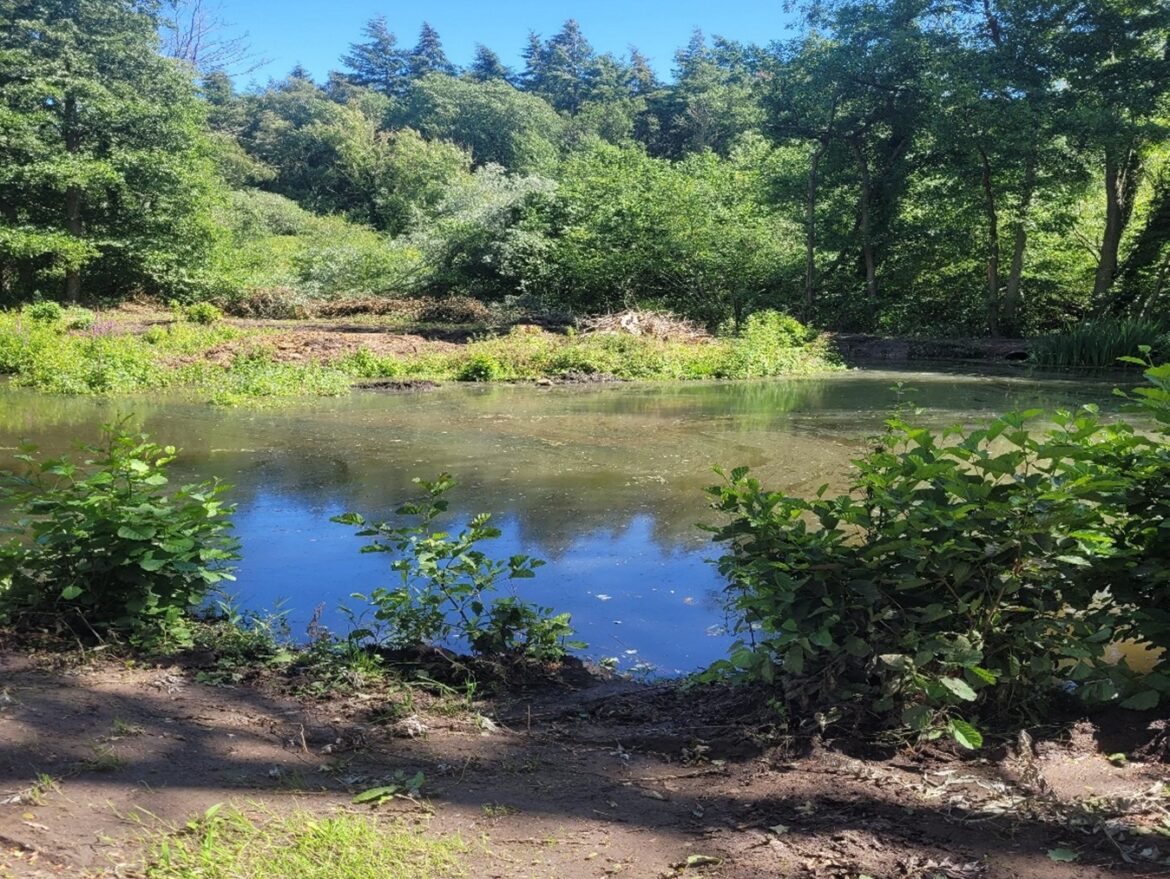Farming in Protected Landscapes Case Study:
Pond restoration at Tiger Hill Nature Reserve

In 2023, through the Farming in Protected Landscapes programme, £4,081 was awarded for pond restoration on Tiger Hill Local Nature Reserve, at Arger Fen.
This pond had become heavily shaded and silted up since it was created 20 years ago. Work has been done with the help of Dedham Vale National Landscape volunteers to reduce shading and leaf fall through coppicing of alder trees around the pond.
This pond was recognised in the Tiger Hill Local Nature Reserve management plan as clearly being out of condition. It would continue to dry out and turn into dry land if its management did not include de-silting.
This would result in the loss of the only permanent open-water body in the Tiger Hill Local Nature Reserve, with consequent diminution of the overall biodiversity of the reserve. Open water in woodlands is very important for nature as provides habitat especially favourable for aquatic invertebrates and flora.
Tiger Hill is locally important for reptiles, with records for grass snakes, common lizards and slow-worms, which are all priority (NERC Act 2006 s41) species. Amphibians present include frogs, toads (a Priority species) and smooth newts.
These species may also be expected to benefit from the restored pond. SNS freshwater invertebrate county recorder Adrian Chalkley has provided a list of 27 different aquatic invertebrates from the stream and pond on this site from a survey in 2016.
What work was done?
Working with the advice of Natural England, restoration work involved:
- Mechanical dredging of the sediment, and removing grass and nettles from the sides of the pond and carting the silt away from the SSSI area to protect the wet grassland vegetation
- Blocking the channel into the pond from the Assington Brook
- Redirecting the spring to the north to supply water to the pond, to reduce the risk of flooding
- Rebuilding the collapsed outflow conduit and building a new dam.
What happens next?
Biodiversity and water quality monitoring will be implemented, and the pond will be maintained as an open water habitat through rotational coppicing of surrounding trees, to minimise shading and leaf fall.

This is the pond shortly after the restoration work had been done, so the water has yet to settle, but a pair of wild ducks, an egret and water boatmen have already been spotted on the pond. An island has been left in the pond as a safer nesting and roosting site for birds to give them some protection from predators.
